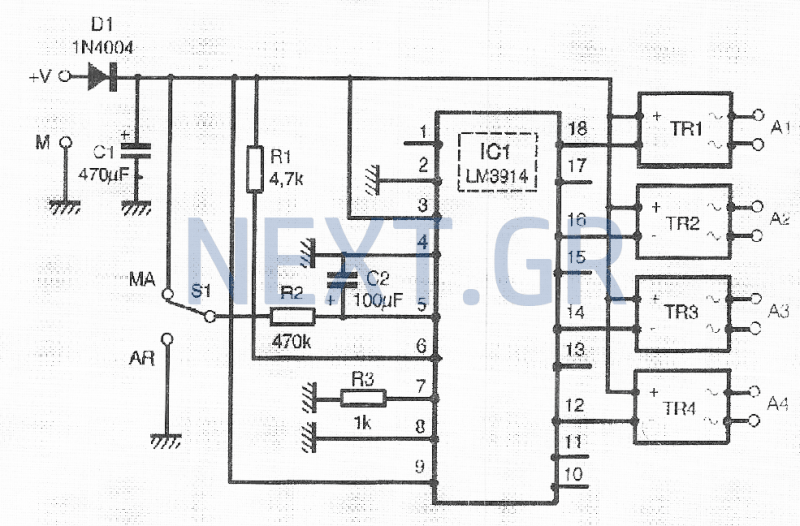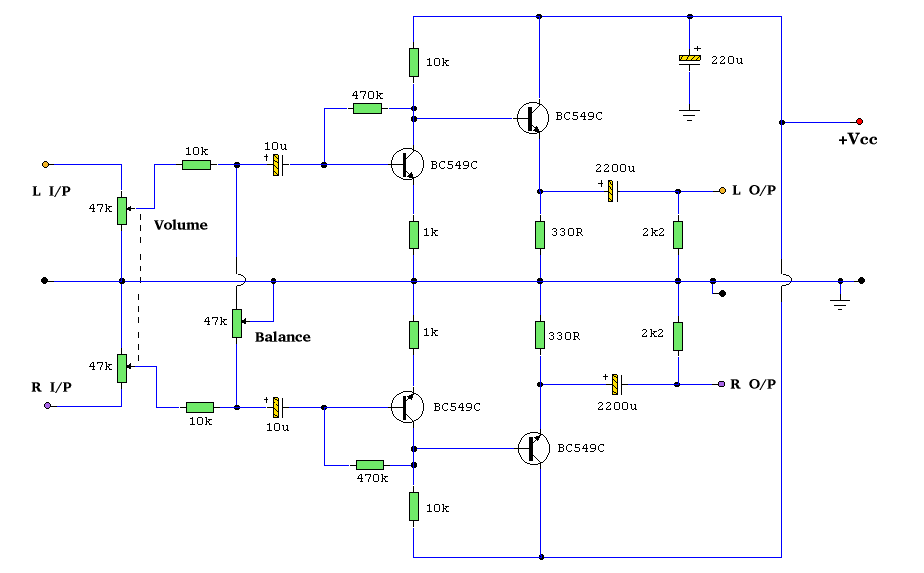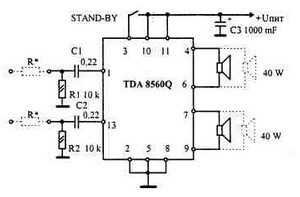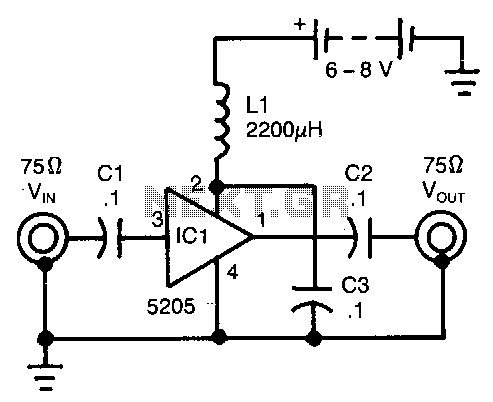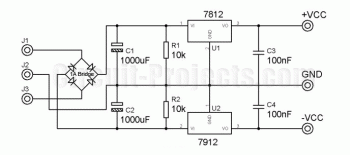
80W power amplifier MJ3001 and MJ2501
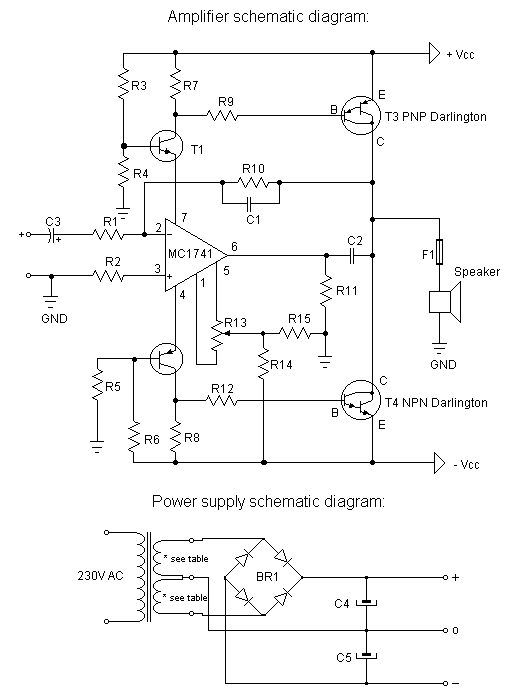
This is a very simple, low cost, Hi-Fi quality power amplifier. You can build it 5 ways, like its shown in the table (from 20 W to 80 W RMS). The first thing that you must do, is to measure the end transistors (T3 and T4) amplifying coefficient, the hfe or β. If their disagreement is bigger than 30 %, the amplifier would not give a clear sound. I used MJ3001 and MJ2501 transistors, and this disagreement was around 5%. More: Before the first turning on you must short circuit the inputs of the amp, and put a mA-meter on the output, than turn the amplifier on, and tune the R13 pot, to decrease the DC current on the output, to some uA-s, or in a lucky situation to
This circuit describes a low-cost Hi-Fi quality power amplifier that can be configured in five different ways, allowing for output power ranging from 20 W to 80 W RMS. The design emphasizes the importance of selecting appropriate transistors for optimal performance. Specifically, the end transistors, labeled T3 and T4, should be measured for their current gain, denoted as hfe or β. A variation in the hfe greater than 30% between these transistors may lead to audio distortion or a lack of clarity in sound reproduction. For this design, the MJ3001 and MJ2501 transistors are recommended, as they typically present a variation of around 5%, which is acceptable for maintaining sound quality.
Before the initial power-up of the amplifier, it is crucial to short-circuit the inputs to prevent any unintended signals from affecting the measurements. A milliampere meter (mA-meter) should be connected to the output to monitor the DC current during this setup phase. Upon powering the amplifier, the R13 potentiometer should be adjusted to minimize the DC output current to a few microamperes. This adjustment is vital to ensure that the amplifier operates correctly without damaging the connected speakers or causing distortion in the audio output. This procedure is essential for achieving a reliable and high-fidelity amplification performance.This is a very simple, low cost, Hi-Fi quality power amplifier. You can build it 5 ways, like its shown in the table (from 20 W to 80 W RMS). The first thing that you must do, is to measure the end transistors (T3 and T4) amplifying coefficient, the hfe or β. If their disagreement is bigger than 30 %, the amplifier would not give a clear sound. I used MJ3001 and MJ2501 transistors, and this disagreement was around 5%. Before the first turning on you must short circuit the inputs of the amp, and put a mA-meter on the output, than turn the amplifier on, and tune the R13 pot, to decrease the DC current on the output, to some uA-s, or in a lucky situation to 🔗 External reference
This circuit describes a low-cost Hi-Fi quality power amplifier that can be configured in five different ways, allowing for output power ranging from 20 W to 80 W RMS. The design emphasizes the importance of selecting appropriate transistors for optimal performance. Specifically, the end transistors, labeled T3 and T4, should be measured for their current gain, denoted as hfe or β. A variation in the hfe greater than 30% between these transistors may lead to audio distortion or a lack of clarity in sound reproduction. For this design, the MJ3001 and MJ2501 transistors are recommended, as they typically present a variation of around 5%, which is acceptable for maintaining sound quality.
Before the initial power-up of the amplifier, it is crucial to short-circuit the inputs to prevent any unintended signals from affecting the measurements. A milliampere meter (mA-meter) should be connected to the output to monitor the DC current during this setup phase. Upon powering the amplifier, the R13 potentiometer should be adjusted to minimize the DC output current to a few microamperes. This adjustment is vital to ensure that the amplifier operates correctly without damaging the connected speakers or causing distortion in the audio output. This procedure is essential for achieving a reliable and high-fidelity amplification performance.This is a very simple, low cost, Hi-Fi quality power amplifier. You can build it 5 ways, like its shown in the table (from 20 W to 80 W RMS). The first thing that you must do, is to measure the end transistors (T3 and T4) amplifying coefficient, the hfe or β. If their disagreement is bigger than 30 %, the amplifier would not give a clear sound. I used MJ3001 and MJ2501 transistors, and this disagreement was around 5%. Before the first turning on you must short circuit the inputs of the amp, and put a mA-meter on the output, than turn the amplifier on, and tune the R13 pot, to decrease the DC current on the output, to some uA-s, or in a lucky situation to 🔗 External reference
